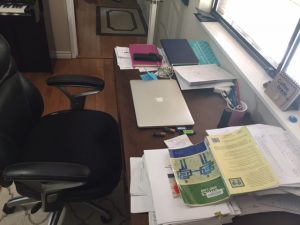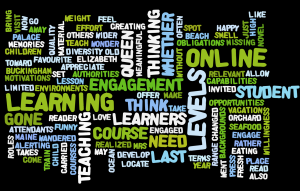 Hello, My name is Chantal Faucher. Here is my intro podcast. I have been teaching for over 15 years and look forward to 15 more!
Hello, My name is Chantal Faucher. Here is my intro podcast. I have been teaching for over 15 years and look forward to 15 more!


Just another TRUBOX Sites site
 Hello, My name is Chantal Faucher. Here is my intro podcast. I have been teaching for over 15 years and look forward to 15 more!
Hello, My name is Chantal Faucher. Here is my intro podcast. I have been teaching for over 15 years and look forward to 15 more!

I showcased my second post because it focused on critical thinking, which I value highly in my teaching and the material in that lesson gave me new ideas to think about in relation to the teaching and learning of critical thinking skills.
Looking back on my teaching, the most important lesson I draw from this course is the connection between social presence, cognitive presence, and teaching presence. That really resonated with me. I appreciated the different ideas for promoting social presence, such activities which may sometimes feel like a waste of time. They are in fact very important because they contribute to the learning environment and, therefore, to the learning that may occur within that environment even though they may not be learning activities per se.
Looking forward, what I want to think about is how to align the learning outcomes with the assessments used as a fundamental practice that guides my teaching. Along with that, and especially for online courses, I also want to develop a greater mindfulness in the feedback that I provide to ensure it also contributes to the desired learning outcomes. This process will entail personal reflection on my part, but I will also seek input from other teachers as to what has worked well for them in these regards and see how I may apply those techniques to my practice.
Providing feedback sometimes presents a challenge because it seems to be ignored often, or used as a basis for arguing about a grade. I always try to start with some positive feedback (what they have done well, or at least the demonstration of an effort), which I think aligns with the “self” level. After that, my feedback tends to focus on what the student failed to do or areas that need improvement, which aligns with the “task” level.
Where I see a gap, is that I sometimes lose focus of the goals and just concentrate on how well the task was accomplished, rather than how well they worked toward the goal that was set. In recent years, I have developed marking rubrics, that I share with the students at the same time as I discuss the assignment. In this way, the goal is clearly laid out for the student and they can see the different degrees of attainment for that goal. When I mark with a rubric, I am then more precisely focused on the goals rather than the general quality of the work or other considerations.
I think the optimal way to provide feedback is as part of a conversation with a student, where they can also contribute to the feedback process by stating what they believe they have done well and what gave them more trouble, and we can come to an understanding about appropriate steps to take moving forward (“feed forward”).
The department-approved learning outcomes for Intro to Criminology are:
Upon successful completion of this course, students will be able to:
1. Explain, critique, and apply theories of crime (e.g. Classical, biological/psychological, social
structure, social process, social conflict)
2. Explain, and cite examples of, how theory informs policy and practice in Canada and globally
3. Compare and contrast the formal and informal techniques for measuring crime
4. Define and critique the concepts of crime and deviance
5. Discuss the evolution of criminal law and defences in Canada
6. Analyze the changing ecology of crime in Canada
7. Discuss contemporary societal issues that inform our understanding, and reaction to, crime
To these, I also add (verbally) that students will develop proficiency in writing skills (including proper referencing skills), critical thinking skills, and efficient note-taking skills.
These learning outcomes reflect a combination of low-level (explain, cite examples, define, discuss) and high-level cognitive skills (critique, apply, compare and contrast, analyze).
Student learning in this course is assessed through a range of writing activities (personal reflections, news critique), exams, referencing activities, and participation activities (comparing concepts, analyzing cases, applying concepts, quizzes of concepts, video debriefing).
I believe that the learning outcomes and assessments are aligned. The exams tend to assess the lower-level skills as well as a few of the higher level skills. The other assessments and graded learning activities promote the acquisition of high-level skills.
The learning outcomes that begin by “discuss” appear to be weaker as they lack specificity and it is not clear how we would assess them. They could perhaps be re-worded as:
-Synthesize the key contributors in the evolution of criminal law and analyze the applicability of legal defences in particular situations
-Analyze the ways in which contemporary societal issues inform our understanding, and reaction to, crime
The development of critical thinking, though often not an enumerated learning objective, guides much of what I aspire to for my students. Such an orientation can be seen through the selection of course materials as well as through questions that I ask and tasks that I assign in a course. I had never before explored the concept of cognitive presence, much less its connection to social presence and teaching presence. However, having reviewed the material in this module, it seems self-evident that the three are intimately related. How can we expect students to engage in critical thinking (which involves some degree of “putting yourself out there” and taking risks) if they are feeling isolated, marginalized, disconnected, or without guidance? I appreciated how the practical inquiry model laid out a sequence of steps that might occur in the development of critical thinking as a process. The model suggests a progression, which may involve returning to prior phases of the process, and a cyclical pattern that may emerge to further develop the thought process. Additionally, this heuristic model helps to clarify that the process of critical thinking cannot always be fully and adequately assessed through the methods that would view critical thinking merely as an outcome. Hence, there is a need to develop a range of methods for assessing the extent to which critical thinking as a process has occurred and cognitive presence has been achieved.
My word cloud emphasizes student learning and engagement (as it should, probably!), but also references my favourite vacation spot (Old Orchard Beach, Maine) and my most recent pleasure reading (Mrs. Queen takes the train). Although perhaps a disparate set of ideas, they all do evoke reflections on common themes: the roles we have, our obligations toward others, and what we need to feel engaged. Old Orchard Beach is a happy place for me, tied up in childhood memories (and eating lobster), but also a place to connect with family who are far away. In Mrs. Queen takes the train, a Queen Elizabeth who feels bogged down by her role wanders away from Buckingham Palace to go visit a place that carried happy memories for her. All of her attendants who realized she’d gone missing set out to locate her without alerting the authorities or the press. Learning environments allow learners to feel engaged by being relevant and creating opportunities for meaningful learning. In the last year, I have come to a greater appreciation of the diversity of learners, their backgrounds, their motivations, their capabilities, and their willingness to make the effort to engage. I have gone from thinking that my role in the course should be to offer each student what they need to thinking that each student will take what they need from the course. It has changed the way I develop and teach courses. I think about the same lesson in terms of levels of engagement, rather than levels of material.
Welcome to TRUBOX Sites. This is your first post. Edit or delete it, then start blogging!